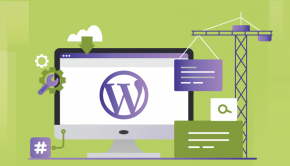5 Valuable Tech Skills You’ll Learn by Building Your Website
Most people who build their own website end up learning key aspects of design in the process. If you’re using a DIY website builder that does most of the hard work for you, you’ve made a great choice. In addition to saving money, you’ll also develop some valuable tech skills.
Although popular DIY platforms make it easy to create a website without formal training, sometimes you’ll need to get under the hood. The tech skills you’ll develop will vary depending on your website builder of choice. For example, DIY website builders provide different features with varying levels of access to source files. Some builders allow direct editing, while others don’t. You can get into more trouble editing a WordPress website than you can by editing a Wix website.
Regardless of your platform, troubleshooting and simple mistakes are inevitable, so get ready to learn the following tech skills.
1. Basic HTML knowledge
When you’re a DIY designer, you might be intimidated by the idea of learning basic HTML to make custom edits you can’t perform in a WYSIWYG editor. However, basic HTML is easy to learn.
Here are the most common bits of HTML knowledge you can expect learn:
- Inserting JavaScript and calls to stylesheets. Inserting JavaScript between the <head></head> tags is easy, but when you’ve got multiple scripts and calls it’s important to place them in the proper order. For example, CSS styling and calls to stylesheets should be placed before scripts to speed up page loading time.
- Basic tags. When editing your website content in the HTML editor, you’ll learn simple HTML markup including paragraph breaks, line breaks, making text bold or italic, and using inline styles.
There will be times when you won’t be able to get your site to do exactly what you want inside a visual editor. Having basic HTML knowledge will help you edit the source directly.
2. Basic CSS understanding
Understanding CSS on a basic level is important for everyone who edits their own website. Depending on your chosen layout, CSS might control everything from your typography styles to the actual layout of your site.
Just like there will be times when you’ll need to edit your site’s HTML directly, you’ll also need to edit your site’s CSS file(s). For example, say you want to customize your main menu colors. You’ll need to edit your site’s CSS file to change the colors.
To get your preferred CSS color values, you can find them on the W3 Schools HTML color picker page.
3. Editing DNS information
Your webhost, domain provider, and email provider might all be separate companies. In that case, you’ll need to learn how to edit DNS information. This could include setting up nameservers with your domain provider, adding text entries to prove you own a domain, or adding MX values to get email through a third-party provider.
Nameservers are by far the easiest DNS editing you’ll have to manage. Most domain providers make this process easy. However, if you decide to get your domain-based email through a mail provider like ProtonMail or Gmail, you’ll need to make several more complex edits.
To understand DNS in-depth, check out this DNS guide from WP Beginner. The guide explains everything from nameservers and IP addresses to CNAME and MX records. It’s a lot to take in, but at some point, you’ll need to understand DNS enough to make some changes.
4. Search engine optimization (SEO)
While you build your website, you’ll learn a bit of basic on-page SEO. Most web builders come with plugins designed to help you optimize your site on a page-by-page basis. For instance, each page will have sections you can fill in for meta tags, a meta description, and keywords.
As you continue publishing content, you’ll strengthen your on-page SEO techniques.
5. A decent understanding of SSL
You know you need SSL, but can you explain it to someone else?
SSL stands for Secure Sockets Layer. SSL establishes a secure, encrypted link between a web server and a browser. An SSL connection encrypts all data passed between the web server and browser. In other words, SSL encrypts all the information your visitors enter on your website like usernames and passwords, email addresses, and credit card data.
With some website platforms, you’ll need to follow a tutorial to install and activate SSL, which will result in more knowledge regarding the https protocol.
Building your website is a learning experience
There’s plenty to learn from building your own website, even on a DIY platform. Thankfully, the tech skills you learn will be helpful long-term, and you might even be able to help someone else.










![The Driving Dead [Infographic]](https://technofaq.org/wp-content/uploads/2016/12/the_driving_dead-150x150.jpg)






